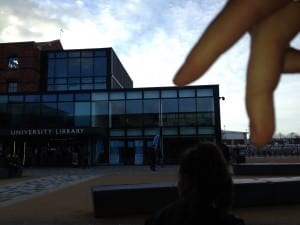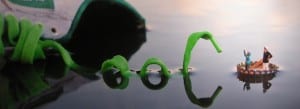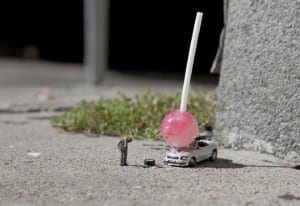Site-Specific Performance takes us from the comforting conventionalities of the theatrical world and encouragingly opens our eyes to all the spaces that we often seem to take for granted. Whilst conventional theatre takes a play and refines its meaning into the given space, Site Specific involves making a performance that ‘responds to a place from the perspective of an outsider’ (Govan, 2007, 121). Performance artists look at a space and draw meaning from it – whether it be cultural, historical, philosophical or more, it generates a narrative for new perspectives to arise. It can happen any where at any time and for any length. What I find most intriguing about site-specific performance, is the term of ‘space’. Before taking this module, if I were to think of the word ‘space’ I would immediately associate this as something blank and isolated; somewhere that has to be busy to have meaning. Henceforth when reading Mike Pearson’s Site-Specific Performance, I realised that spaces around us whether neglected or bustling, withhold meaning on their own. It does this by engaging with ‘site as a symbol, site as storyteller [and] site as structure’ (Wilkie, 2002, 158). Simple moments of a loud conversation, a torn up piece of paper on the floor or an interesting architectural design all have a story to tell. Site-specific performers can then take these as documentation and reinvent a new or reflective meaning for those who are visiting or those whom know it extremely well.
Linking this into our first week of workshops and seminars, it made me think back to our first year module of Reading Performance and how we actually define ‘performance’. Richard Schechner’s book Performance Studies: An Introduction suggests that performance ‘examines texts, architecture, visual arts … not in themselves, but as players in ongoing relationships.’ (Schechner, 2013, 2). Everything in our day to day life could be seen as performance: the way we act in front of friends and family, pausing at traffic lights, entering though a door way and so forth. Taking part in a subtle mob to create a new experience for not only ourselves to take in, but to affect the experience of others. Although it seemed a very bizarre idea at the time, it really made us observe all the little movements and gestures of people in the area and the purpose of the site. In some ways the site outside the library/LPAC is used as a liminal space (neither here nor there, a travelling space), whilst it could also be a meeting place for new students. Reflecting on this, it allowed me to realise that site’s may have more than one meaning and that is what can be incredibly special about a performance taking place in them. Whatever meaning we may find can be extracted from the space and applied specifically to the site, through the medium of performance. Having the opportunity to work uphill in Lincoln is incredible and I look forward to the journey we will experience!
Pearson, M. (2010) Site-Specific Performance. London: Palgrave Macmillan.
Schechner, R. (3rd ed) (2010) Performance Studies: An Introduction. London: Routledge.
Govan, E., Nicholson, H. and Normington, K. (2007) Making a Performance. New York: Routledge.




![IMG_0986[1]](https://sitespecific2015rba.blogs.lincoln.ac.uk/files/2015/01/IMG_09861-e1422466823390-225x300.jpg)
![IMG_0986[1]](https://sitespecific2015rba.blogs.lincoln.ac.uk/files/2015/01/IMG_09861-e1422467105878-225x300.jpg)